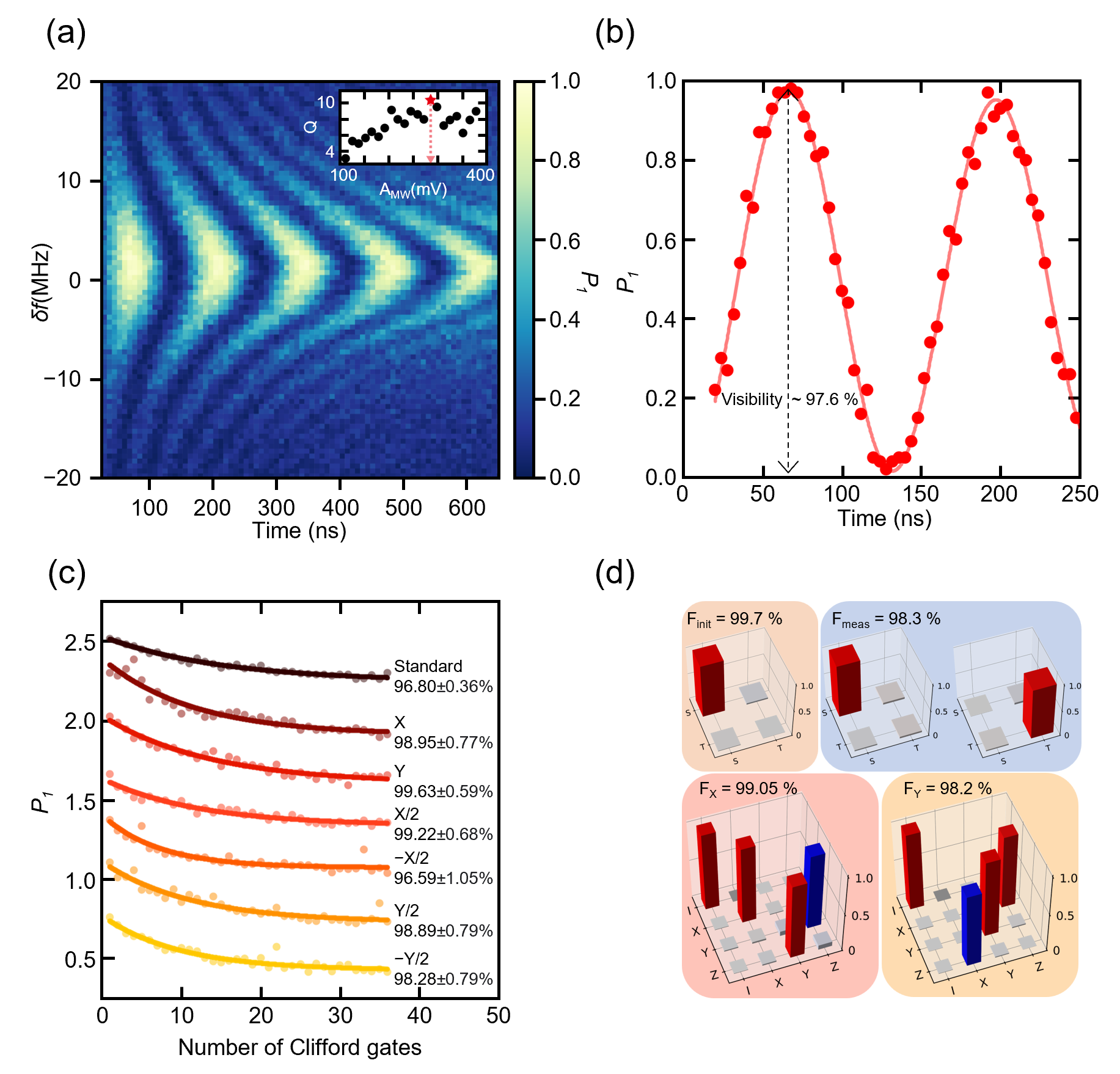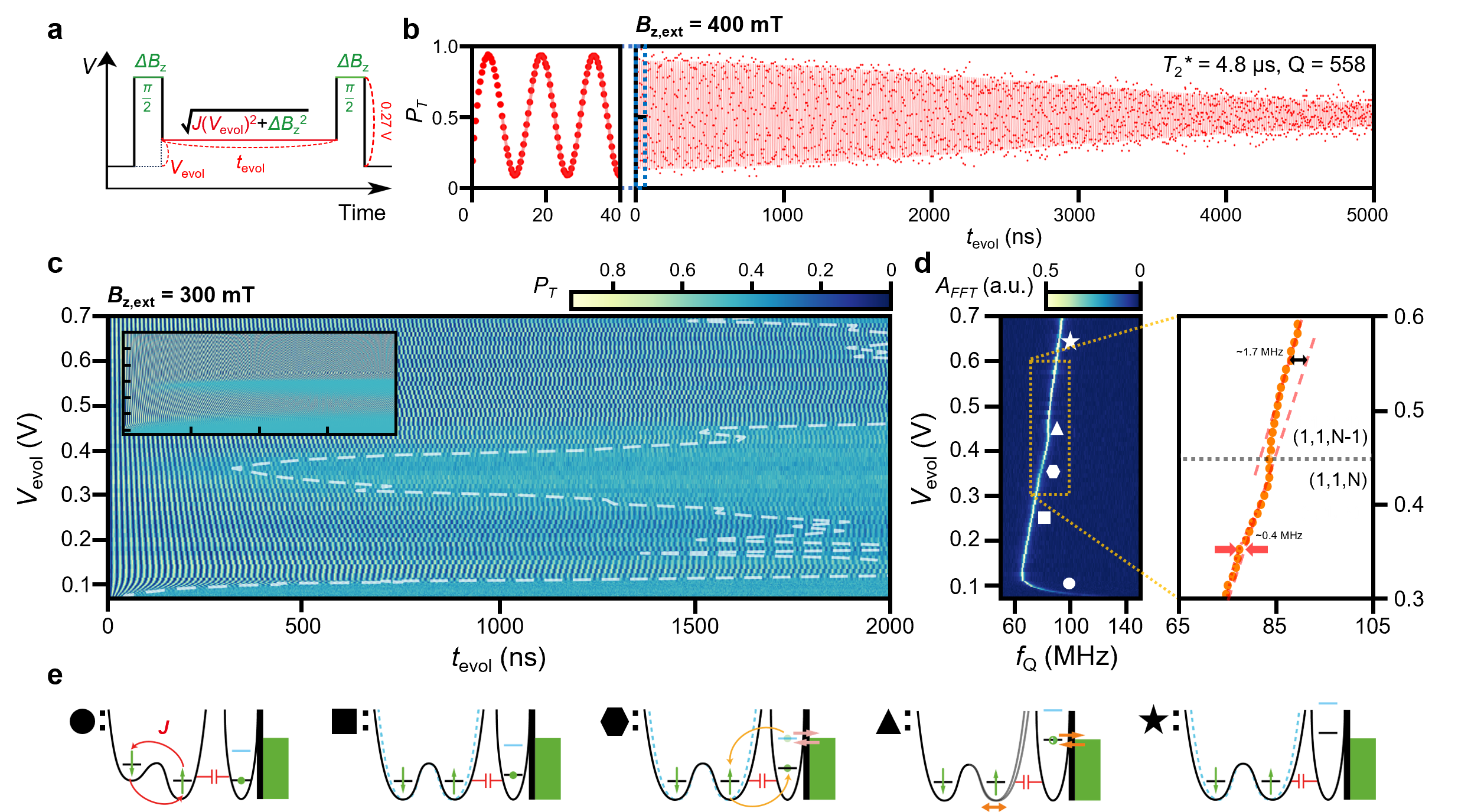Electronic Measurement of Semiconductor Quantum Dot Devices
This page contains detailed information about the electronic measurement of semiconductor quantum dot devices. The project consists of three major works: (1) Bayesian estimation and fidelity optimization, (2) measurement of capacitive coupling between Singlet-Triplet qubits, and (3) Spin-Electric Coupling of Singlet-Triplet Qubits.
Work 1. Bayesian Estimation and Fidelity Optimization
In this work, we developed an energy-selective tunneling readout-based Hamiltonian
parameter estimation for a two-electron spin qubit within a GaAs quantum dot array.
Our achievements include:
- Real-Time Bayesian Estimation: We successfully implemented real-time Bayesian estimation techniques.
- Enhanced Single-Qubit Gate Fidelity: We significantly improved single-qubit gate fidelity through Bayesian-based active-feedback methods.
- Validation through Benchmarking: We confirmed the enhanced single-qubit gate fidelity through rigorous validation methods, including Randomized Benchmarking (RB) and Gate-Set Tomography (GST).
To elaborate further, our results showcased a 40-fold increase in coherence time without resorting to dynamic nuclear polarization. We demonstrated active frequency feedback with exceptional visibility and fidelity, achieving quantum oscillation visibility, single-shot measurement fidelity, and gate fidelity levels of 97.7%, 99%, and 99.6%, respectively. These achievements collectively represent substantial advancements in the capabilities of GaAs-based spin qubits. For detailed insights and representative results of this project, please refer to Figure 1, and you can find details at Phys. Rev. Lett. 129, 040501.
Work 2. Measurement of Superlinear tendency of Capacitive Coupling between Singlet-Triplet Qubits
One of the trammels that hamper singlet-triplet qubits to be used in scaling up is the weak interqubit coupling and its bilinearly increasing tendency.
By implementing the simultaneous operation and two-qubit-coupling measurement of a pair of two-electron spin qubits,
actively decoupled from quasi-static nuclear noise in a GaAs quadruple quantum dot array, we observed strong two-qubit capacitive interaction (>190 MHz), combined with detuning pulses, inducing a
state-conditional frequency shift. The two-qubit capacitive interaction is beyond the bilinear regime, consistent with recent theoretical predictions.
We observe a high ratio (>16) between coherence and conditional phase-flip time, which supports the possibility of generating high-fidelity and fast
quantum entanglement between encoded spin qubits using a simple capacitive interaction. More information can be found at npj Quantum Information 9, 30 (2023)
Work 3. Spin-Electric Coupling of Singlet-Triplet Qubits and Noise Analysis
In this work, we demonstrated fast singlet-triplet qubit oscillation (~ 100 MHz) in a gate-defined double quantum dot in 28Si/SiGe with an on-chip micromagnet
in the large valley-splitting regime (> 175 μeV) where proper field gradient enables the oscillation quality factor of an encoded spin qubit over 580. Notably, strong
spin-electric coupling is observed as a gradient of a qubit frequency in electrical pulse detuning. We analyzed the variation of coherence time T2*
as a function of confinement potential detuning and external magnetic fields where at low magnetic fields the coherence is limited by fast noise compared to data acquisition
time leading to T2* < 1 μs in ergodic limit. Moreover, we showed evidence of sizable and coherent coupling of the qubit with spin states of a nearby quantum
dot demonstrating that the proper amount of spin-electric coupling may enable a charge-based two-qubit gate in (1,1) charge configuration.


